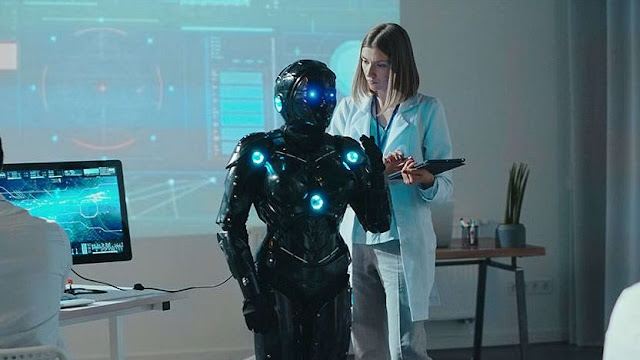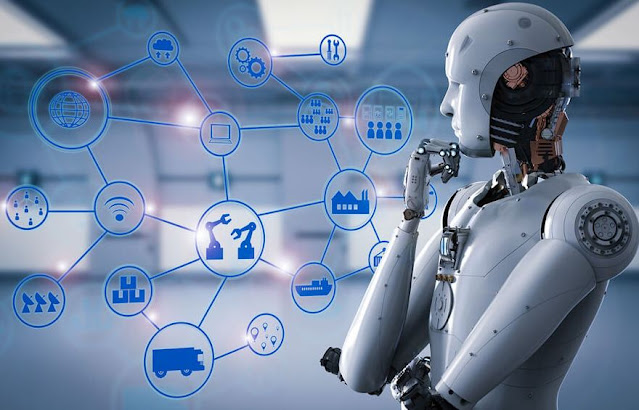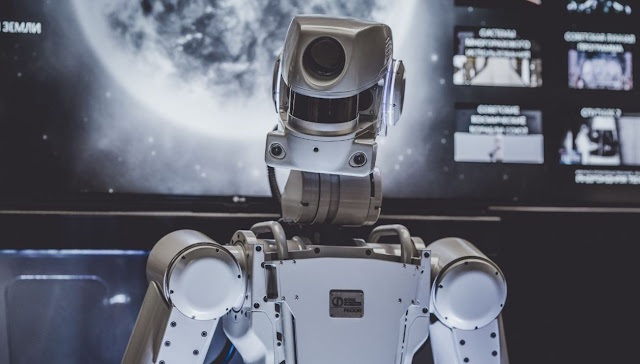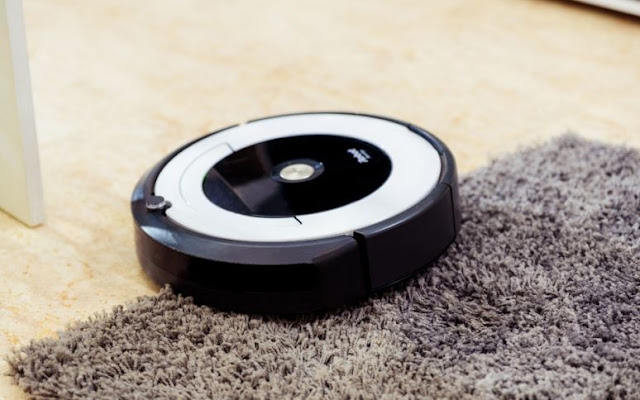What Is Robotics?
Robotics is the fusion of science, engineering, and technology that creates machines, referred to as robots, that mimic or take the place of human beings in action. Robots have long been a source of fascination in popular culture; examples include R2-D2, the Terminator, and WALL-E. These exaggerated, humanoid representations of robots frequently seem to be parodies of the real thing. But are they more futuristic than we think? Robots are developing mechanical and intellectual abilities that do not rule out the possibility of an R2-D2-like machine in the future.
The range of what is regarded as robotics expands along with technological advancement. In automotive factories, 90% of all robots were working on car assembly in 2005. These robots primarily consist of mechanical arms that are used to weld or attach specific car parts.
The definition of robotics as it exists today has evolved and been broadened to encompass the creation, use, and development of robots that perform tasks like exploring the harshest environments on Earth, assisting law enforcement, streamlining surgical procedures, and performing rescue missions.
Robotics Defined
Even though the field of robotics as a whole is growing, a robot always has the following traits:
1. Robots are made of some kind of mechanical design. A robot's mechanical component aids in its ability to carry out tasks in the setting for which it was created. For instance, the Mars 2020 Rover's individual motorised titanium tubing wheels help it maintain a firm grip on the challenging surface of the red planet.
2. Electrical parts are necessary for controlling and powering the machinery in robots. Essentially, the vast majority of robots require an electric current to function, such as that provided by a battery.
3. Robots are at least partially computer programmed. A robot would merely be another piece of basic machinery if it didn't have a set of instructions telling it what to do. A robot can be made to know when and how to complete a task by programming it.
The robotics industry's potential will undoubtedly materialise sooner rather than later as software and artificial intelligence advance as well. Thanks to developments in these technologies, robots will soon continue to become smarter, more adaptable, and more energy-efficient. They'll also remain a key focus in smart factories, where they'll take on more challenging tasks and aid in safeguarding international supply chains.
The robotics industry holds out the laudable promise of advancement that science fiction could previously only imagine. Robots will be found carrying out tasks that humans could never hope to complete on their own, whether they are in the deepest parts of our oceans or thousands of miles away in space.
Types of Robotics
To effectively complete the task for which they were created, mechanical bots come in a variety of sizes and shapes. Each robot is unique in terms of its design, purpose, and level of autonomy. Robots are being developed to perform tasks that humans can't, ranging in size from the 0.2 millimeter-long "RoboBee" to the 200 meter-long robotic shipping vessel "Vindskip."
The capabilities of the five different types of robots determine how they carry out tasks. An overview of these types and what they do can be found below.
Pre-Programmed Robots
Pre-programmed robots carry out routine, easy tasks in a controlled environment. A mechanical arm on an auto assembly line would be an illustration of a pre-programmed robot. The arm's purpose is to complete a task longer, faster, and more effectively than a human could—for example, welding a door on or inserting a specific part into the engine.
Humanoid Robots
Robots that mimic human behaviour or look like humans are known as humanoid robots. These robots frequently carry out actions associated with humans (such as running, jumping, and carrying objects), and occasionally they are created to resemble us, including having human faces and expressions. The Sophia and Atlas humanoid robots from Hanson Robotics and Boston Dynamics are two of the most well-known models.
Autonomous Robots
Robots with autonomy work without human supervision. These robots are typically made to complete tasks in public spaces without human supervision. They are quite unique in that they employ decision-making structures (typically a computer) to determine the best course of action based on their data and mission and then use sensors to perceive the world around them. The Roomba vacuum cleaner, which uses sensors to roam freely throughout a home, is one example of an autonomous robot.
Teleoperated Robots
Semi-autonomous robots that can be controlled by humans from a safe distance are known as teleoperated robots. Typically, these robots operate in harsh environmental factors like weather and terrain. Teleoperated robots include, for instance, the human-controlled submarines that were used to repair underwater pipe leaks during the BP oil spill or drones that were used to find landmines in a war zone.
Augmenting Robots
Virtual reality (VR) robots, also known as augmentation robots, either supplement or replace lost human abilities. Science fiction could soon become reality in the field of robotics for human enhancement, where robots with the power to make people faster and stronger could completely rewrite what it means to be human. Robotic exoskeletons or prosthetic limbs are two examples of current augmenting robots that can lift heavy objects.
What Is a Bot? What Is Software Robotics?
Bots, another name for software robotics, are computer programmes that operate independently. A chatbot is an example of a software robot in use. A chatbot is a type of computer programme used frequently in customer service settings that simulates conversation both online and over the phone. Chatbots can be straightforward services that respond to inquiries automatically or sophisticated digital assistants that learn from user data.
Software robots are not regarded as robots because they only exist online and come from a computer. A device must have a physical form, such as a body or a chassis, in order to be classified as a robot.
How Do Robots Function?
Independent Robots
Robots that are autonomous are able to operate without the need for human operator control. These usually require more complex programming but enable robots to replace humans when performing risky, boring, or otherwise impossible tasks, from deep-sea travel and bomb dispersion to factory automation. Since they both eliminate some jobs and open up new opportunities for growth, autonomous robots have proven to be the most disruptive to society.
Dependent Robots
Non-autonomous dependent robots interact with people to improve and supplement their natural behaviours. Advanced prosthetics that are controlled by the human mind are one type of dependent robots that have been realised. This is a relatively new form of technology, and it is constantly being expanded into new applications.
For Johnny Matheny, a patient whose arm was amputated above the elbow, Johns Hopkins APL built a famous example of a dependent robot in 2018. Matheny received a modular prosthetic limb so that scientists could observe its use over an extended period of time. Electromyography, or signals sent from his amputated limb that control the prosthesis, is used to control the MPL. As Matheny improved at operating the MPL and the signals coming from his amputated limb shrank and became less variable, the MPL's movements became more precise, enabling Matheny to carry out delicate tasks like playing the piano.
What Are the Main Components of a Robot?
Robots are designed to address various needs and serve a variety of purposes; as a result, they need a wide range of specialised components to carry out these functions.
However, some parts, like a power source or a central processing unit, are essential to the construction of every robot. In general, robotics parts can be divided into the following five groups:
Control System
All of the parts that make up a robot's central processing unit, also known as its control system, are considered to be part of computation. In a way similar to how the human brain sends signals throughout the body, control systems are programmed to instruct a robot how to use particular components in order to carry out a specific task. Anything from minimally invasive surgery to assembly line packing could be included in these robotic tasks.
Sensors
Robots can interact with the outside world thanks to sensors, which provide stimuli in the form of electrical signals that are processed by the controller. Robots frequently contain photoresistors, which act as the robots' eyes, video cameras, and microphones, which act as the robots' ears. These sensors enable the robot to observe its surroundings, analyse the most logical conclusion given the circumstances at hand, and transmit commands to the other parts via the controller.
Actuators
A machine can only be categorised as a robot if its body or frame can move. The components causing this movement are called actuators. These parts are made up of motors that take commands from the control system and work together to make the movements required to finish the task at hand. Actuators come in a variety of formats to best fulfil their specialised roles. They can be made of a variety of materials, such as metal or elastic, and are frequently operated by use of compressed air (pneumatic actuators) or oil (hydraulic actuators).
Power Supply
Robots require power to function, just like the human body does. Robots typically use an internal battery, though stationary robots like those found in factories may also operate on AC power through a wall outlet. Most robots use lead-acid batteries because of their durability and safety, though some may use the more portable but more expensive silver-cadmium variety. Designing a robot's power supply requires taking into account a number of important factors, including weight, safety, replaceability, and lifecycle.
Pneumatic power from compressed gases, solar power, hydraulic power, flywheel energy storage organic waste through anaerobic digestion, and nuclear power are additional potential power sources for future robotic development.
End Effectors
End effectors are the tangible, frequently external parts that enable robots to complete their tasks. Robots used in factories frequently have interchangeable tools like paint sprayers and drills, robots used in surgery may have scalpels, and other robot types may be constructed with grasping claws or even hands for tasks like deliveries, packing, bomb dispersion, and other things.
Uses of Robots
Robots are the ideal technology for the future because they can be used in a wide range of situations. Robots will soon be virtually ubiquitous. They will be present in hotels, hospitals, and even on the roads.
Robotics in Manufacturing
The use of robots in manufacturing is likely the oldest and most well-known. These co-bots, or robots that assist humans in their work, efficiently test and assemble goods like automobiles and industrial machinery. Over three million industrial robots are thought to be in use at this time.
Logistics Robots
Robotic shipping, handling, and quality control are becoming necessities for the majority of retailers and logistics firms. In order to maximise time efficiency, logistics companies use robots in warehouses and even on the road because we now expect our packages to arrive at lightning speeds. Your products are currently being picked up off the shelves, moved across the warehouse floor, and packaged by robots. A rise in last-mile robots—robots that will deliver your package to your door on their own—also makes it likely that you'll come into contact with a logistics bot in the near future.
Robots for Home
Science fiction is no longer appropriate. Our homes are filled with robots that assist with household tasks, serve as schedule reminders, and even amuse our children. The self-driving hoover cleaner Roomba is the most well-known example of a home robot. Robots can now also perform a variety of tasks, including pool cleaning and autonomously mowing grass.
Travel Robots
Is anything more reminiscent of science fiction than autonomous vehicles? These self-driving vehicles are now a reality. Self-driving cars, which combine robotics and data science, are sweeping the globe. The next wave of transportation, which will allow us to sit back, relax, and enjoy the ride, is being developed by businesses like Tesla, Ford, Waymo, Volkswagen, and BMW. Uber and Lyft, two ridesharing companies, are also creating autonomous rideshare vehicles that don't need drivers to operate them.
Healthcare Robotics
The healthcare sector has seen significant advancements made by robots. These mechanical wonders are used in almost every facet of healthcare, from robot-assisted surgeries to machines that aid in physical therapy for injured people. TUG, a robot designed to autonomously stroll throughout a hospital and deliver everything from medicines to clean linens, are examples of robots at work in the healthcare industry. Toyota's healthcare assistants, which help people regain the ability to walk, are another example.
Pharmaceutical companies have used robots to aid in the battle against COVID-19. These robots are now employed by some manufacturers to create PPE and respirators as well as to fill and seal COVID-19 testing swabs.
History of Robotics
Since ancient civilizations introduced myths and ideas of "thinking machines" into their societies and created the water clock, people have been thinking about robots. Since the time of the Greeks, Romans, and Egyptians, robotics has undergone significant change, but it has a long history. Here is a look at some of the major occasions that impacted the development of robotics.
1700s
The first biomechanical automaton is constructed by Jacques de Vaucanson in 1737. The mechanical instrument, known as the Flute Player, performs 12 songs.
1920s
(1920) In Karel Capek's play R.U.R., the word "robot" first appears. The word "robot" is derived from "robota," which is Czech for "forced labour."
(1926) Metropolis features the first movie robot.
1930s
In his paper "On Computable Numbers," published in 1936, Alan Turing introduces the idea of a fictitious computer known as the Turing Machine.
1940s
MIT professor Norbert Wiener published Cybernetics or Control and Communication in the Animal in 1948. The concept of communication and control in electronic, mechanical, and biological systems is discussed in the book.
In 1949, neurophysiologist and inventor William Grey Walter unveiled Elmer and Elsie, a pair of battery-powered robots that resemble tortoises. The robots move things, look for a light source, and navigate themselves back to a power source.
1950s
The Three Laws of Robotics are published by Isaac Asimov in 1950.
In his 1950 paper "Computing Machinery and Intelligence," Alan Turing proposed the Turing Test, a technique for determining whether a machine is intelligent.
1960s
(1961) A General Motors facility employs the first robotic arm. The arm performs about 200 movements in accordance with a programme while lifting and stacking metal components. George Devol and his business partner Joseph Engelberger designed the arm.
(1969) Victor Scheinman creates the Stanford Arm, a six-jointed robotic arm that can imitate a human arm's movements. It is among the earliest robots created with computer control in mind.
1970s
Shakey, the first robot to employ artificial intelligence, was developed in 1972 by a team of engineers at the Stanford Research Institute. Shakey completes tasks by taking note of its surroundings and devising a strategy.To plan its movements, the robot makes use of sensors, a rangefinder, and touch-sensitive equipment.
(1978) A four-axis SCARA robotic arm is created by automation researcher Hiroshi Makino. The arm is programmed to pick up an object, turn, and place it in a different location, making it the first "pick and place" robot.
1980s
The PUMA 560 robotic surgical arm is used in the first surgical procedure with robot assistance that has been documented (1985).
William Whittaker constructs two remotely controlled robots in 1985 and delivers them to the Three Mile Island nuclear power facility. The robots survey the area, transmit data, and drill core samples to measure radiation levels while operating in the basement of the damaged reactor building.
The 1989 publication Fast, Cheap and Out of Control: A Robot Invasion of the Solar System by MIT researchers Rodney Brooks and A. M. Flynn. The paper makes the case for producing many small, inexpensive robots as opposed to a few large, expensive ones.
1990s
(1990) A team of MIT researchers discovered iRobot, the organisation that created the Roomba vacuum cleaner.
Another MIT researcher named Marc Raibert founded the robotics business Boston Dynamics in 1992.
Sojourner lands on Mars in 1997. In addition to more than 17,000 images, 15 chemical analyses of rocks and soil, and extensive data on Mars' weather, the free-ranging rover transmits 2.3 billion bits of data back to Earth each day.
(1998) Tiger Electronics releases Furby, a robotic pet that goes on to sell tens of millions of units. Furbys have the ability to learn new languages over time and are preprogrammed to speak gibberish.
Aibo, a robotic puppy powered by AI, debuts on the market in 1999. The robotic dog was created by Sony and has some pre-programmed behaviour.
2000s
Cynthia Breazeal develops a robotic head in 2000 that can both elicit and respond to emotions. The robot, Kismet, has 21 motors, audio sensors, and algorithms to recognise vocal tones.
The humanoid Sony Dream Robot, a bipedal entertainment robot that Sony developed and marketed but never sold, is unveiled in the year 2000.
After September 11, 2001, iRobot's PackBot searches the site of the World Trade Centre.
iRobot develops the Roomba in 2002. The first robot to gain popularity among the general public in the commercial sector is the vacuum robot.
The Kiva robot is created in 2003 by Mick Mountz and the other co-founders of Amazon Robotics (previously Kiva Systems). The robot moves goods while navigating warehouses.
(2004) BigDog, a quadruped robot operated by humans, is unveiled by Boston Dynamics. Since it can only have two feet on the ground at once, the robot is renowned for being more agile than earlier versions of robots. It has a computer onboard that controls the gait and maintains stability, along with 50 sensors.
(2004) The Defence Advanced Research Projects Agency of the Defence Department launches the DARPA Grand Challenge. a self-driving car competition designed to spur technological innovation in military autonomous vehicles.
(2005) The winner of the second DARPA Grand Challenge is a Volkswagen Touareg named Stanley. The vehicle completes a 131.2-mile course in the Mojave Desert using five lidar laser sensors and AI that has been programmed to learn from the driving styles of real people.
2010s
2011 saw the launch of the space shuttle Discovery carrying Robonaut 2, a robotic assistant that resembles a human. The robot settles down on the International Space Station as a permanent resident.
Atlas, a humanoid biped robot from Boston Dynamics, debuts in 2013 and uses 28 hydraulic joints to mimic human movements, including flipping over.
Nevada (2012) grants the first permit for a self-driving vehicle. The vehicle is a Google-developed version of a Toyota Prius.
(2014) As part of a social experiment, Canadian researchers create hitchBOT, a robot that hitches rides across Canada and Europe.
(2016) Hanson Robotics developed Sophia, a humanoid robot known as the first robot citizen. The robot can recognise faces and communicate verbally and through facial expression.
2020s
(2020) The COVID-19 test and vaccinations are delivered by robots.
(2020) The shipping of 384,000 industrial robots across the world to carry out various manufacturing and warehouse tasks.
The first two robotaxi test drives by Cruise, an autonomous vehicle company, take place in San Francisco in 2021.







Post a Comment